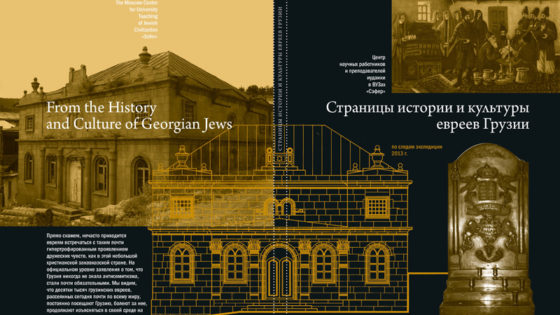די מזרח וואַנט
ר‘ יהודה הלוי (1075-1141) איז געווען מפורסם פאַר זײַן פילאָזאָפישער אַרבּעט די כּוזרים און געשריבּן לידער. איינע פון זײַנע בּאַוואוסטע לידער הייבּט זיך אָן
מײַן האַרץ איז אין מזרח און איך בּין אין עק מערב
מזרח איז די ריכטונג וואָס יידן אין גלות דאַווענען. די הלכה זאָגט אַז יעדער ייד דאַרף דאַווענען מיטן פּנים צום קדשי קדשים אין בּית המקדש אין ירושלים. דאָס האָט אויכעט אַ השפּעה ווי אַזוי מ‘בּויט שולען און וואו מ‘לייגט דעם ארון–קודש. דאָס וואָס די אייראָפּעער פלעגן דאַווענען צו מזרח האָט געשאַפן דעם טערמין ‘מזרח וואַנט‘.
די מזרח וואַנט איז די פאָדערשטע וואַנט אין שול וואו דער ארון–קודש מיטן עמוד געפונען זיך ווי אויך דאָס אָרט וואו דער רב אָדער די שיינע יידן און געסט זיצן בּײַם דאַווענען. אַ חתן, דער שבּת פאַרן אָדער נאָכן חתונה אָדער אַ בּר מצוה יינגל ווען ער רופט זיך אויף צו דער תּורה זעצט מען אויך פון פאָרענט בּײַם מזרח וואַנט. און הײַנטיקע צײַטן יעדערער וואָס דאַכט אים אַז עס קומט אים כּבוד גיט זיך אַ זעץ אַוועק אויבן אָן, ווי דאָס שפּריכוואָרט משל‘ט אָפּ:
Di Mizrekh Vant
R’ Yehuda Haleyvi (1075-1141) iz geven mefursm far zayn filezofisher arbet ‘di kuzarim’ , un oykh geshribn lider. eyne fun zayne bavus’te lider heybt zikh on
“mayn harts iz in mizrekh un ikh bin in ek mayrev”
mizrekh iz di rikhtung vos yidn in golus davenen. di ha’lo’khe zogt az yeder yid darf davenen mitn ponim tsum kodshey kodoshim in beys hamikdosh in yerushalayim. dos hot oykhet a hash’po’e vi a’zoy m’boyt shulen un vu m’leygt dem oren-koydesh. dos vos di yu’ro’pey’er flegn davenen tsu mizrekh hot geshafn dem termin ‘mizrakh vant’.
di mizrakh vant iz di fodershte vant in shul vu der oren-koydesh mitn omed gefunen zikh, vi oykh dos ort vu der rov oder di sheyne yidn un gest zitsn bam davenen. a khosen, der shabes farn oder nokhn khasene oder a bar mitsve yingl ven er ruft zikh oyf tsu der toy’re zetst men oykh fun forent bam mizrakh vant. un hayntike tzaytn, yederer vos dakht em az es kumt em koved git zikh a zets a’vek oyven on, vi dos shpikhvort moshelt op:
The Eastern Wall
Reb Yehuda Halevi (1075-1141), best known for his great philosophical work The Kuzari and for his poems about Zion, in particular the poem whose first line may be translated:
“My heart is in the east (Jerusalem), and I in the uttermost west (Spain).”
Mizrach is the Hebrew word for “east” and the direction that Jews in the Diaspora face during prayer. The Jewish law states that every Jew face the direction of the site of the Temple in Jerusalemduring prayer, has implications on how synagogues are built and the place where the ark is placed. The fact that the Europeans were davening facing east created the term for the wall alongside the holy ark The Eastern Wall or in Yiddish “mizrach vant”.
The Eastern Wall, where the holy ark is placed along with the stand for the leader of the services, is also the place reserved forthe Rabbiand other dignitaries or important guest. Also a Choson , a groom, the Shabbos before or after the wedding, a Bar Mitzva boy, the Shabbos he is called up to read the portion of the Torah. He is bestowed with honor and gets to sit up front at tha Mizrach wall. Nowadays, just anybody who thinks that he is a somebody and thinks he deserves respect, pushes his way up front. As the proverb says:
Click here to hear this in Ladino (from 2:38 to 2:58)
לבי במזרח ואני בסוף מערב
מזרח, זה הכיוון שהיהודים בגלות מתפללים. הלכה זו, שיש לכל יהודי לכוון את תפילתו אל כיוון ירושלים והמקדש משליכה כמובן על בנינו של בית הכנסת ומיקום ארון קודש שבו. עובדה זו, שבני אירופה נהגו להתפלל לכיוון המזרח יצרה את המונח הרווח בבתי הכנסת לקיר בו מצוי ארון הקודש – ‘כותל המזרח‘.
‘קיר המזרח‘ בבית הכנסת, שבו קבועים ארון–הקודש ועמוד הש”ץ, הוא מקום מושבם של נכבדי הקהל ושל אורחים חשובים. גם חתן, בשבת שלפני או אחרי החתונה. וכן חתן כר–מצווה בשבת בו הוא עולה לתורה, נוהגים בו כבוד ומושיבים אותו במזרח. ובזמננו כל אחד שמרגיש שמגיע לו קצת כבוד מתישב לו במזרח, מעין הדיוט קופץ בראש. ועל זה הפתגם אומר:
“Yiddish In 10 Lessons”
workbook and CD’s
NOW AVAILABLE
A QUICK AND EASY WAY TO LEARN YIDDISH


